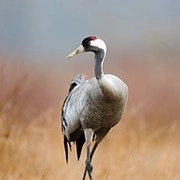Face and Object Recognition

Every day, countless devices around us recognize faces and objects — from unlocking smartphones with face recognition to autonomous cars detecting pedestrians and obstacles.
But how do these machines "see" and understand visual data?
The field of computer vision tackles this challenge by developing complex algorithms capable of analyzing images and videos to detect, locate, and identify faces and objects. Let's explore how computer vision achieves this feat through advanced detection and recognition techniques.
Face Detection: The First Step to Understanding
Face detection is the process of identifying the presence and position of human faces in an image or video frame. It must work under varying conditions such as different lighting, angles, occlusions, and scales. Early approaches, like the Viola-Jones algorithm, used handcrafted features and classifiers to spot faces quickly but struggled with challenging conditions.
Modern state-of-the-art detection now relies heavily on deep learning, particularly convolutional neural networks (CNNs). Techniques such as RetinaFace utilize multi-task learning to simultaneously detect faces, facial landmarks, and 3D positioning on various scales. By analyzing pixel-level data, these models efficiently locate faces even in crowded or complex scenes with high accuracy.
Extracting and Analyzing Facial Features
Once a face is detected, identifying that face requires isolating key landmarks—eyes, nose, mouth corners, and jawline—to normalize the image for further processing. Algorithms like Multi-task Cascaded Convolutional Networks (MTCNN) offer effective landmark detection. Feature extraction also preprocesses images by adjusting contrast and lighting, enhancing the algorithm's ability to distinguish faces under diverse conditions.
Object Detection Beyond Faces
Recognizing objects other than faces uses similar principles but must handle far greater diversity—different shapes, sizes, textures, and contexts. Object detection models divide images into regions, then classify those regions as particular object types or backgrounds. Earlier two-stage methods like R-CNN started this process but were computationally intensive.
Single-shot detectors (SSD) improved speed by performing localization and classification concurrently. These methods use feature pyramids to detect objects at multiple scales efficiently. Popular architectures also include YOLO (You Only Look Once), which balances accuracy and speed, making object detection viable for real-time applications like video surveillance or robotics.
Learning and Improving Through Data
Both face and object recognition depend on training models with vast datasets containing labeled examples. Deep learning thrives on this abundant data, enabling models to learn complex visual patterns. Techniques such as Principal Component Analysis (PCA), Eigenfaces, and Fisherfaces historically helped reduce dimensionality and classify faces statistically, but CNNs now outpace these methods by automatically learning relevant features.
The models continually improve by adjusting parameters through feedback on prediction errors, enhancing accuracy over time. This data-driven learning is the reason behind impressive recent gains in recognizing faces with varied expressions and objects in cluttered environments.
Applications and Ethical Considerations
Face and object recognition underpin many cutting-edge technologies—security systems verify identities, social media tags friends automatically, and autonomous vehicles identify traffic elements. However, concerns about privacy, surveillance, and bias in recognition systems are rising. It is crucial to implement these technologies transparently and ensure datasets represent diverse populations fairly to avoid discrimination.

How Do You Engage with Recognition Technologies?
Think about your interactions with devices that recognize faces or objects daily. Are you aware of how these systems operate, or how they might influence your privacy? Reflecting on this can heighten understanding and encourage informed, responsible use of computer vision innovations that increasingly shape modern life.
Computer vision's ability to detect and recognize faces and objects is a remarkable achievement of modern AI. By combining sophisticated algorithms, rich data, and powerful learning methods, these systems bring computers closer to human-like visual understanding, fueling innovations across industries worldwide.

 · Science Team
· Science Team